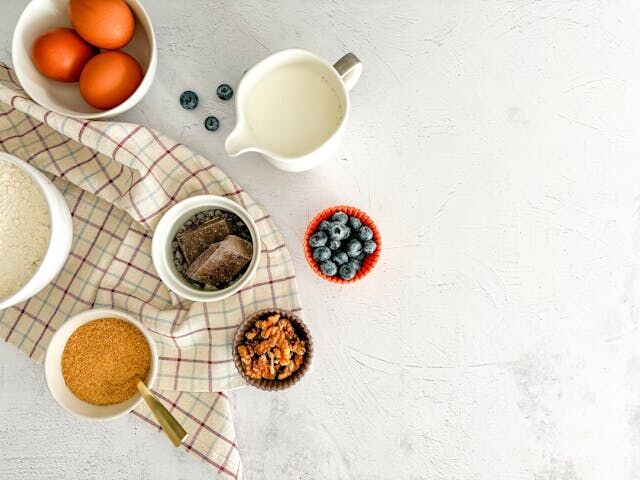
When you're crafting homemade dairy recipes, using pasteurized milk makes a noticeable difference in taste and texture. Pasteurized milk offers a consistent, clean flavor that can elevate your homemade creations. This type of milk has been heated to eliminate bacteria, ensuring that you start with a fresh base every time. This process not only improves the safety of your recipes but also helps maintain the subtle flavors of your dairy dishes.
Pasteurization prepares milk for all kinds of recipes, from creamy butter to soft cheeses. By using pasteurized milk, you can avoid unwanted flavors and inconsistencies. This is particularly important when you want to replicate the comforting, creamy taste of restaurant-quality dishes at home. With the right tools, like a Milky Day milk pasteurizer machine, you can easily pasteurize your own milk to achieve this.
Homemade dairy recipes often rely on specific textures and flavors to meet expectations. The clean taste of pasteurized milk is ideal for recipes that require precise consistency, such as soft cheese or butter. Starting with high-quality, treated milk ensures you improve each ingredient's natural flavors, producing a more satisfying final product.
The Science of Pasteurization and Flavor Improvement
Pasteurization impacts milk's safety by eliminating harmful bacteria and may also affect its flavor. Here’s how this process contributes to both safety and taste in your homemade dairy recipes.
Understanding Pasteurization
Pasteurization is a heat treatment process used to kill harmful bacteria and pathogens in milk, such as Salmonella and E. coli. The milk is heated to about 72°C (161°F) for a short period, usually 15 seconds. This step helps keep milk safe for consumption without causing it to spoil quickly. The process was named after Louis Pasteur, who discovered that heating liquids can prevent bacterial growth. In many countries, pasteurization is required for all commercial milk products to ensure they are safe for consumers.
Impact on Milk Flavor
While pasteurization is known for its safety benefits, it can also affect milk taste. Heating milk changes some of its natural compounds. This can give pasteurized milk a slightly "cooked" flavor compared to raw milk. Some people find this flavor difference pleasant, as it can add depth to homemade dairy recipes. The pasteurization process might also reduce certain flavors in milk. Understanding these changes can help you appreciate the unique tastes in pasteurized milk. The balance of safety and flavor is why many prefer pasteurized milk in their recipes.
Practical Benefits of Using Pasteurized Milk in Recipes
Using pasteurized milk in homemade dairy recipes offers several benefits. It helps maintain safety by eliminating harmful bacteria, ensures consistent results in cooking, and extends the shelf life of your dairy products.
Health and Safety Considerations
When you use pasteurized milk, you greatly reduce the risk of illnesses caused by harmful bacteria. This process kills microorganisms that can be present in raw milk, such as those causing tuberculosis and gastrointestinal infections. Safety is especially important when preparing foods for children, elderly people, or anyone with a weakened immune system.
Pasteurized milk minimizes foodborne risks, allowing you to focus more on creating delicious dishes rather than worrying about potential health issues.
Consistency in Culinary Preparation
Pasteurized milk provides a reliable quality that improves your cooking. It helps maintain the desired texture and taste of your recipes. For instance, when making ice cream, yogurt, or cheese, the consistent quality of pasteurized milk ensures that your results are predictable and satisfying every time.
You can trust that the essential nutrients in the milk, such as calcium and protein, remain intact during the pasteurization process.
Shelf Life and Storage Advantages
Another benefit of pasteurized milk is its extended shelf life. Milk that has undergone pasteurization lasts longer and stays fresh over time compared to raw milk. This means you can store it in your refrigerator without the worry of it spoiling quickly.

With a longer shelf life, you can buy milk in bulk, saving trips to the store and ensuring you always have fresh milk on hand for your recipes. This added convenience makes meal planning easier and helps reduce food waste.
Pasteurized milk is a smart choice when making homemade dairy recipes.
Safety: Pasteurized milk is safer because it undergoes a heat treatment that kills harmful bacteria. This means you can enjoy your dishes without worrying about foodborne illnesses.
Consistency: The taste and texture of pasteurized milk are stable, ensuring your recipes turn out as expected every time. It avoids the guesswork that might come with raw milk, making your cooking experience smoother.
Pasteurized milk has a longer shelf life compared to raw milk, making it more convenient. You can store it for a longer time without worrying about spoilage, which gives you more flexibility in planning your meals.
You’ll also find it widely available in most grocery stores. This makes it easy to get the ingredients you need without searching far and wide. This availability supports cooking on a whim or planning for special occasions.
Related Article:
Indulge Your Sweet Senses: Unconventional, Healthy, and Yummy Treats You Should Try



(0) comments
Welcome to the discussion.
Log In
Keep it Clean. Please avoid obscene, vulgar, lewd, racist or sexually-oriented language.
PLEASE TURN OFF YOUR CAPS LOCK.
Don't Threaten. Threats of harming another person will not be tolerated.
Be Truthful. Don't knowingly lie about anyone or anything.
Be Nice. No racism, sexism or any sort of -ism that is degrading to another person.
Be Proactive. Use the 'Report' link on each comment to let us know of abusive posts.
Share with Us. We'd love to hear eyewitness accounts, the history behind an article.